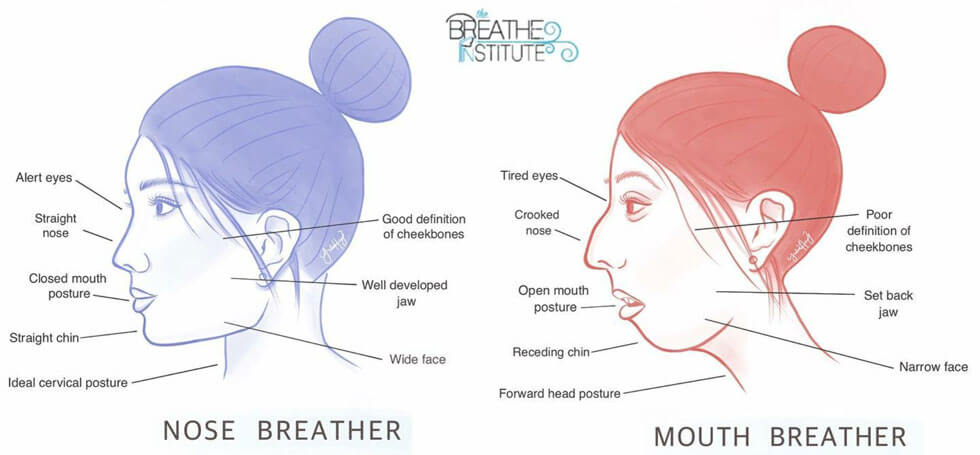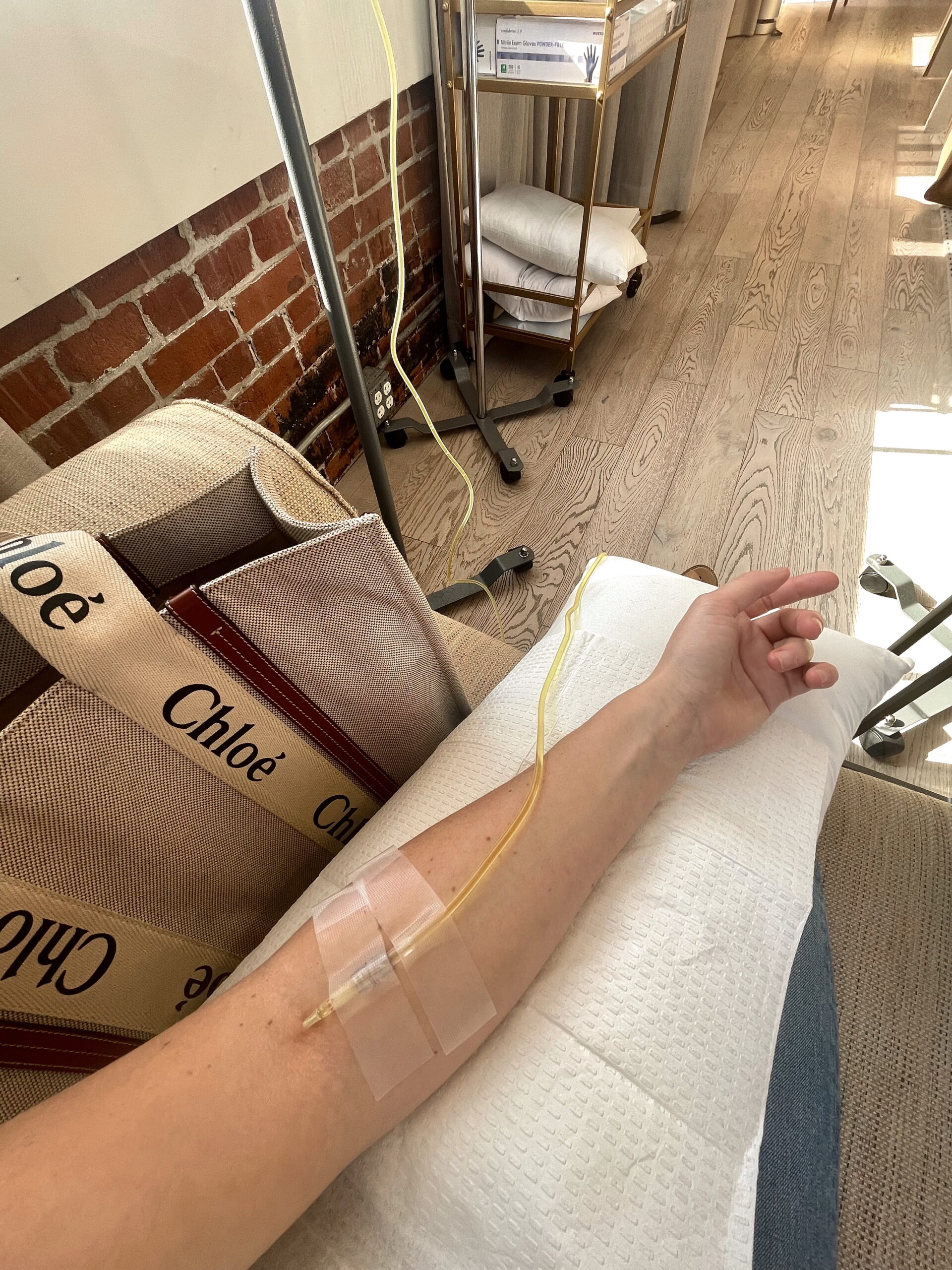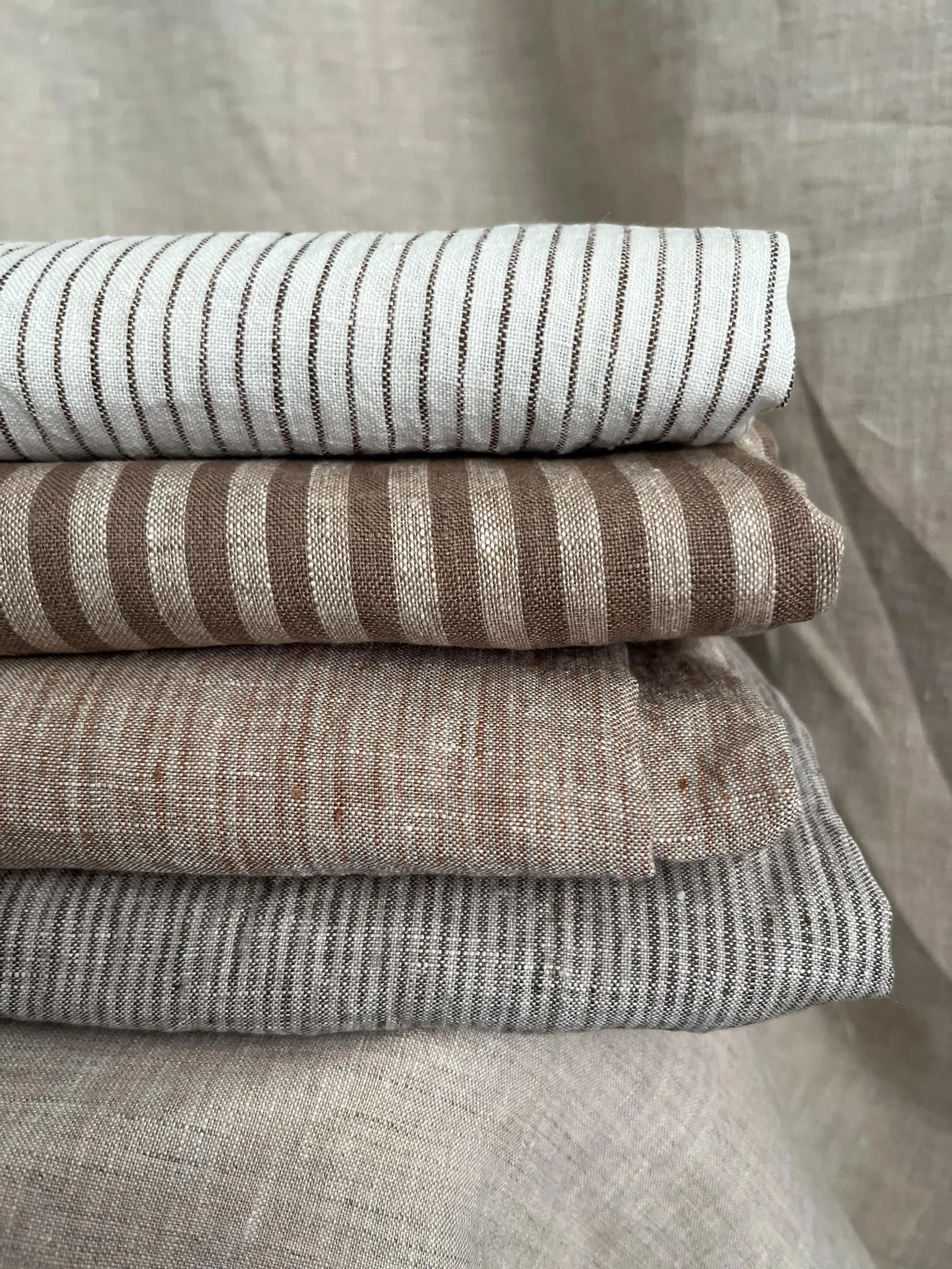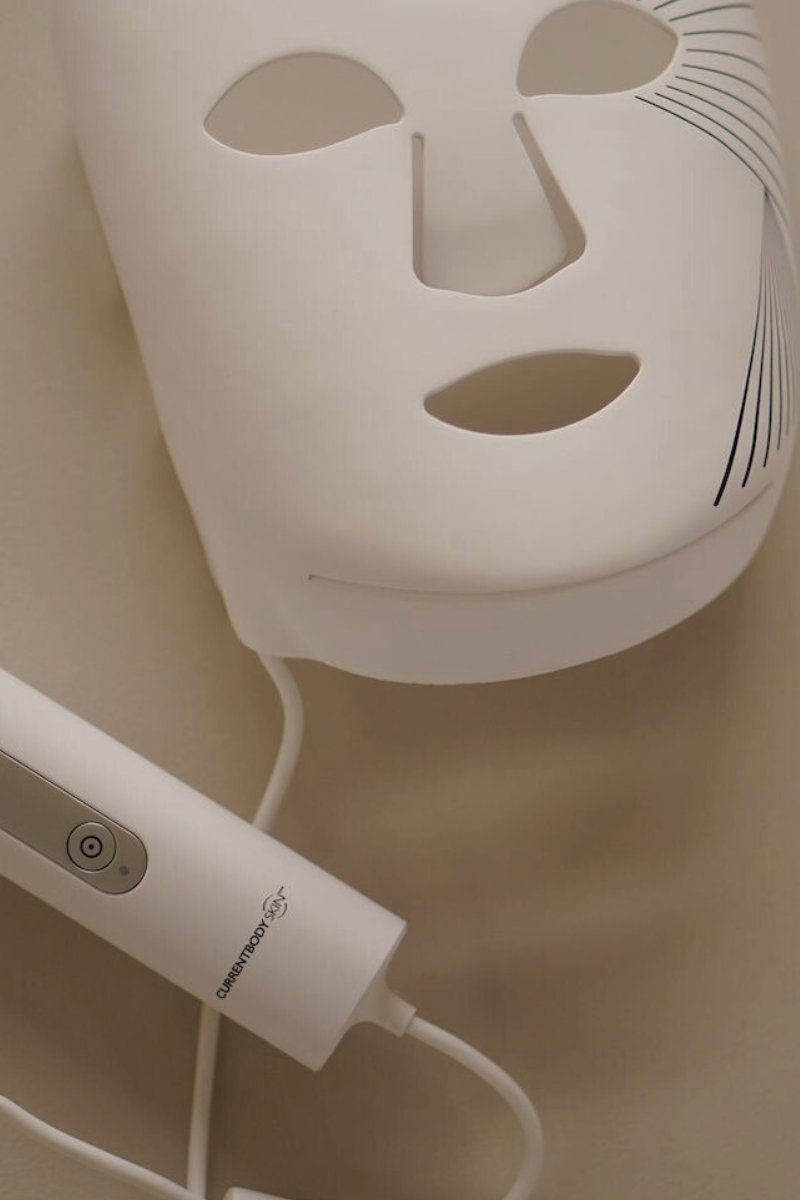TL;DR
- Mouth taping is exactly how it sounds – taping your mouth shut to promote nasal breathing.
- The major health benefits of nasal breathing are better oxygen intake, better quality sleep and decreased asthma and allergy symptoms.
- Our favorite brand of mouth tape (and we’ve tried them all) – Dream Recovery.
- You can start slow or go all in.
It’s been three years since my husband and I added mouth taping to our nightly routine—and over 1,000 nights later, we’re still doing it religiously. It’s one of the simplest changes we’ve made for better sleep, and honestly, we’ll never go back. If you’ve ever woken up groggy, dry-mouthed, or just not feeling rested, this might be the low-effort upgrade you didn’t know you needed.
What is Mouth Taping?
Mouth taping is exactly how it sounds – it’s the practice of placing tape over your mouth. And in this case, we do it before (and during) sleep.
While the concept may sound odd, the goal of mouth taping is to ensure nasal breathing throughout the night. Why? Well, we’re designed to breathe through our nose. But with the introduction of soft foods, the standard American diet, lack of breastfed babies and more, we have moved away from proper tongue placement in the mouth – which leads to a high, narrow maxilla, poor nasal passages and trouble breathing through our nose.
What Does Mouth Taping Do?
The whole point of mouth taping is simple: it helps you breathe through your nose while you sleep. But you might be wondering—why does that even matter?
When you breathe through your nose (instead of your mouth), it can completely change the quality of your sleep. You’re more likely to sleep deeper, snore less, and wake up actually feeling rested. Nasal breathing also helps your body oxygenate better because the air gets filtered, humidified, and prepped before it reaches your lungs. And by keeping your mouth closed, you help your body hold onto just the right amount of CO2—a key part of delivering oxygen where it needs to go.
What are the Health Benefits of Taping Your Mouth at Night?
Beyond the obvious benefit of promoting nasal breathing, here’s how nasal breathing sends a ripple of health benefits throughout the body:
Better Oxygen Intake: Breathing through the nose filters and warms the air, making it more beneficial for our lungs and ultimately leading to better oxygenation of the blood1.
Improved Sleep Quality: Nasal breathing is associated with deeper, more restful sleep. Breathing through the mouth can lead to snoring and sleep apnea, all conditions that disrupt sleep5.
Reduced Risk of Oral Health Issues: A dry mouth can increase the risk of cavities and gum disease3. Mouth taping keeps the mouth closed and prevents dryness.
Better Diaphragmatic Breathing: Breathing through the nose encourages diaphragmatic or deep breathing, which has multiple benefits like reduced stress and increased relaxation6.
Decreased Dry Mouth: Breathing through the mouth can lead to dry mouth, which is not only uncomfortable but can increase the risk of dental issues3.
Humidification and Warming: The nasal passages warm and humidify the air, which can reduce the irritation caused by dry or cold air on the respiratory system. This is especially beneficial for those with allergic reactions that can cause bronchial sensitivity.
Can help alleviate allergies: The nose acts as a natural filter. The nasal hairs (cilia) and mucous lining the nostrils capture dust, pollen, and other allergens, preventing them from reaching the lungs. Breathing through the mouth doesn’t provide this level of filtration, which can lead to increased exposure to allergens.
One of the biggest benefits: Nitric Oxide Production
While your body can produce Nitric Oxide through diet, sunlight and exercise, one of the easiest passive ways to product this antioxidant is through nasal breathing. Here’s why NO production is important:
1. It’s a major antioxidant that helps lower oxidative stress.
Nitric oxide naturally neutralizes free radicals (unstable molecules that damage cells). By keeping free radicals in check, NO helps reduce oxidative stress, which is a big driver of aging, chronic inflammation, and disease. Nasal breathing boosts NO production, meaning your body has more internal “firefighters” against daily oxidative damage.
2. It plays a role in regulating cortisol (stress hormone) levels.
Chronic mouth breathing = less NO = more physiological stress. When you breathe through your nose and generate more nitric oxide, it helps your blood vessels relax (vasodilation), improves oxygenation, and signals the body that it’s safe. This can lower cortisol levels over time because your nervous system isn’t stuck in a constant low-grade “fight or flight” mode. Better oxygenation = calmer body = calmer brain.
3. It supports cardiovascular health.
Nitric oxide is critical for blood vessel health. It helps your blood vessels relax and widen, which improves blood flow and reduces blood pressure. Without enough NO, you’re at a higher risk for endothelial dysfunction, which is an early warning sign for heart disease.
4. It boosts brain function and mood.
NO plays a role in neurotransmission — meaning it helps your brain cells communicate more efficiently. Better blood flow + lower oxidative stress + steadier cortisol = sharper thinking, better memory, and even better mood stability. Some research also suggests that impaired nitric oxide pathways are linked to depression and cognitive decline.
5. It strengthens the immune system.
Nitric oxide acts as a natural antimicrobial within the body — it helps kill off harmful pathogens like bacteria, viruses, and even parasites. Nasal nitric oxide especially plays a role in the first line of immune defense by “cleaning” inhaled air before it reaches your lungs.

Can Mouth Breathing Change Your Facial Structure?
Yes, and no.
Mouth taping itself isn’t what changes your face — it’s what mouth taping encourages that can make a difference over time: proper tongue posture and nasal breathing. When your mouth is closed, it’s easier (and more natural) to keep your tongue pressed gently against the roof of your mouth — which is exactly where it should be.
Proper tongue placement matters because it helps create gentle upward pressure that supports the development and maintenance of the midface area (think stronger jawlines, better facial symmetry, and even wider palates). But it’s important to be realistic: this isn’t something that changes overnight. If you’ve been mouth breathing for years, shifting your facial structure can take a lot of consistent effort — and even then, changes may be subtle unless you’re still growing or working with trained specialists like myofunctional therapists.
Mouth taping can absolutely be a helpful tool to support these goals, but it’s not magic — think of it as setting the stage for your body to work the way it was designed to. Real, lasting change takes time, proper technique, and patience.
What Tape Should You Use for Mouth Taping?
While you could use medical-grade tape, we don’t recommend it. It might stick, but it often leaves a gummy residue and can seriously irritate your lips — not exactly the best way to wind down at night.
If you’re serious about mouth taping, Dream Recovery is the brand we trust (and actually use). They’ve nailed the formula with three options: classic strips for light, minimal coverage, a full-coverage version for extra security, and Dream Tape+, which is infused with soothing ingredients like hyaluronic acid and aloe. Each one is designed to stay on all night, peel off effortlessly in the morning, and leave your skin totally unbothered. They’re gentle, hypoallergenic, residue-free — and yes, they even work with facial hair. If you’re ready to build mouth taping into your routine the right way, this is the best company to start with.
How to Transition into Mouth Taping at Night
Mouth taping can feel a bit intimidating to some. Here are a few tips for anyone looking to try it for the first time:
Start During the Day: Before jumping straight into nighttime taping, practice during the day for short periods. This helps you get accustomed to the sensation and more conscious of your breathing habits.
Partial Taping: Instead of covering the entire mouth, start with a small piece in the center of your lips. If you buy pre-cut tape, feel free to cut it to your liking – or try this one from Dream Recovery.
Listen to Your Body: If you find yourself waking up in the middle of the night feeling uncomfortable, it’s okay to remove the tape. Gradually, your body will get used to the change.
Let any skincare sink in before applying tape. Always ensure your lips and the surrounding area are clean before taping (especially skincare and face oil.) This ensures better adhesion and reduces the risk of skin irritations.
Consult with a Myofunctional Therapist: If you have concerns, or suffer from conditions like severe sleep apnea, consult with a healthcare professional or myofunctional therapist before trying mouth taping.
Seppä J, Sipilä K, Toppila J. The effect of mode of breathing, nasal or oral, on functional residual capacity and ventilation distribution. Respiratory Physiology. 1990;81(3):277-285.
Lundberg JO, Weitzberg E. Nasal nitric oxide in man. Thorax. 1999;54(10):947-952.
Scully C. Drug effects on salivary glands: dry mouth. Oral Diseases. 2003;9(4):165-176.
Harari D, Redlich M, Miri S, Hamud T, Gross M. The effect of mouth breathing versus nasal breathing on dentofacial and craniofacial development in orthodontic patients. Laryngoscope. 2010;120(10):2089-2093.
Sullivan CE, Issa FG, Berthon-Jones M, Eves L. Reversal of obstructive sleep apnoea by continuous positive airway pressure applied through the nares. Lancet. 1981;1(8225):862-865.
Russo MA, Santarelli DM, O’Rourke D. The physiological effects of slow breathing in the healthy human. Breathe. 2017;13(4):298-309.







Comments +